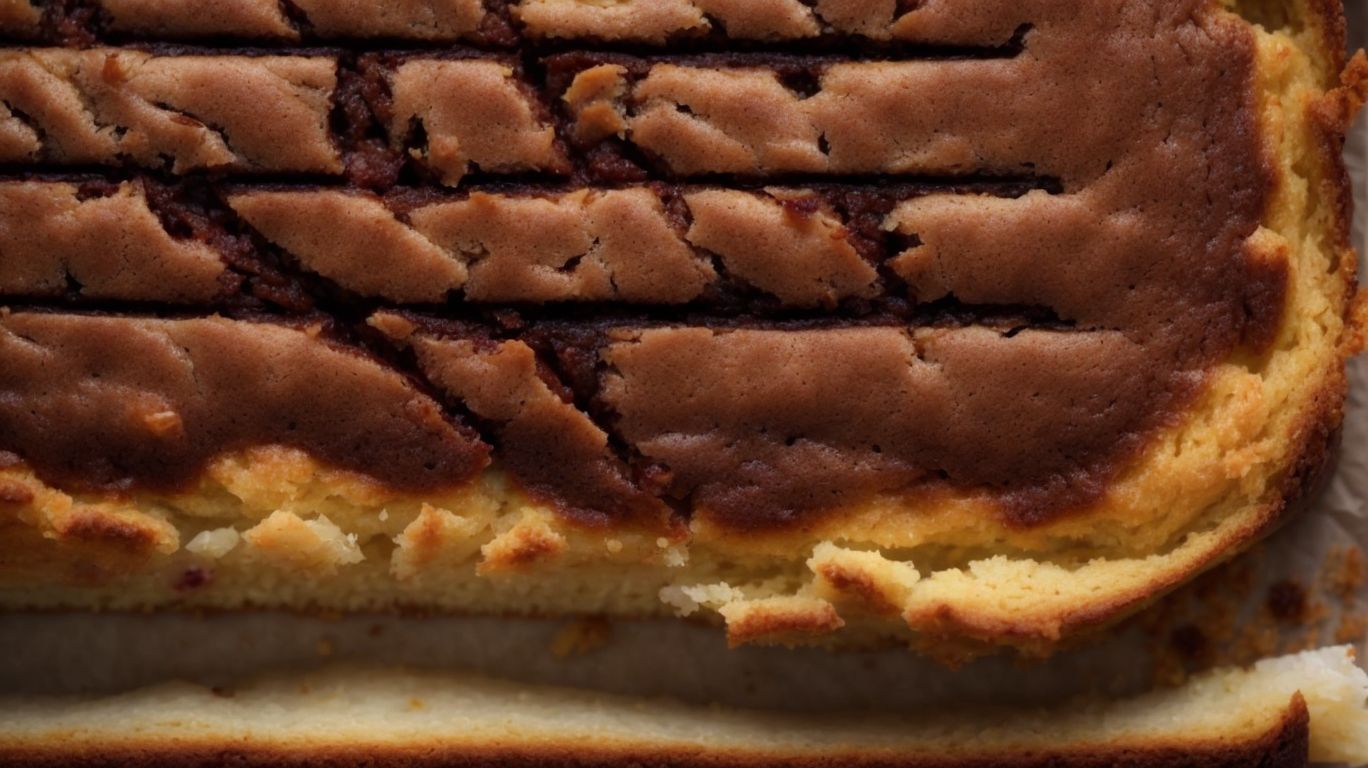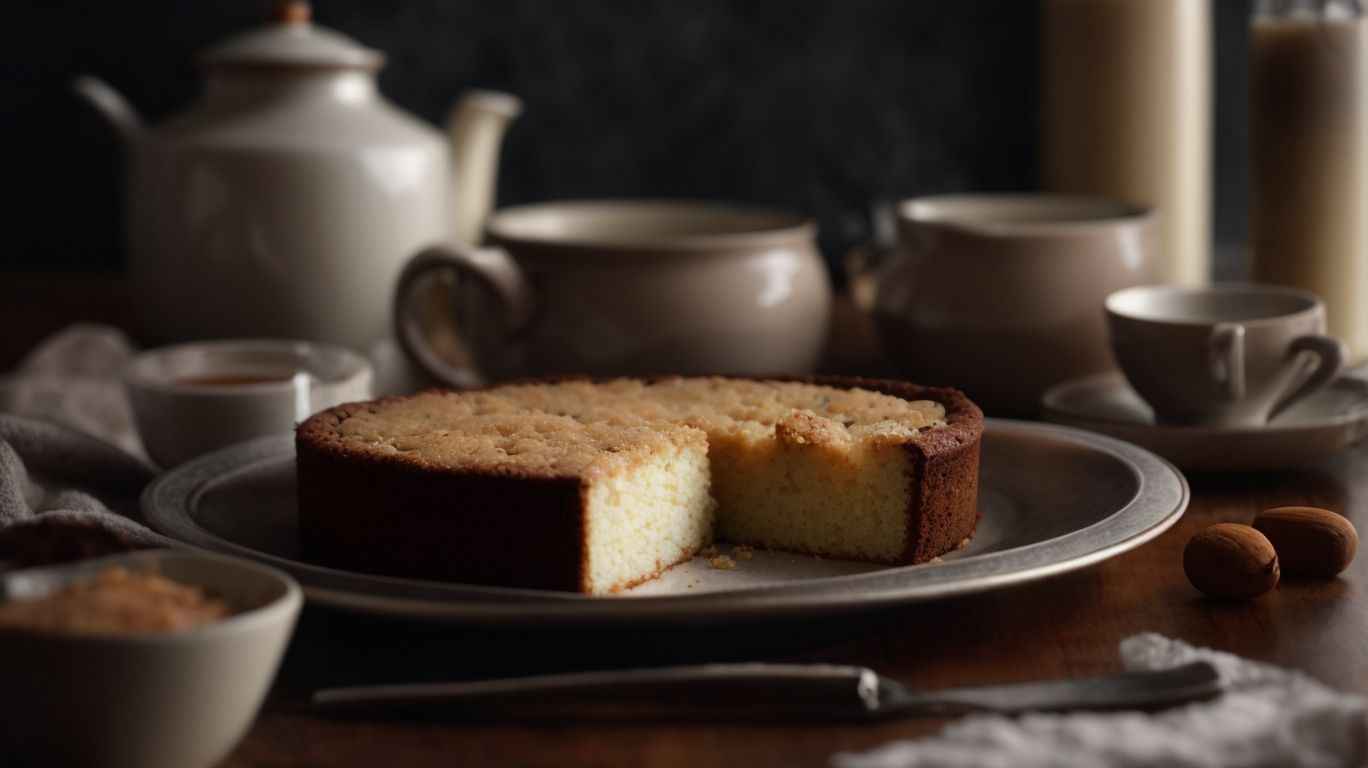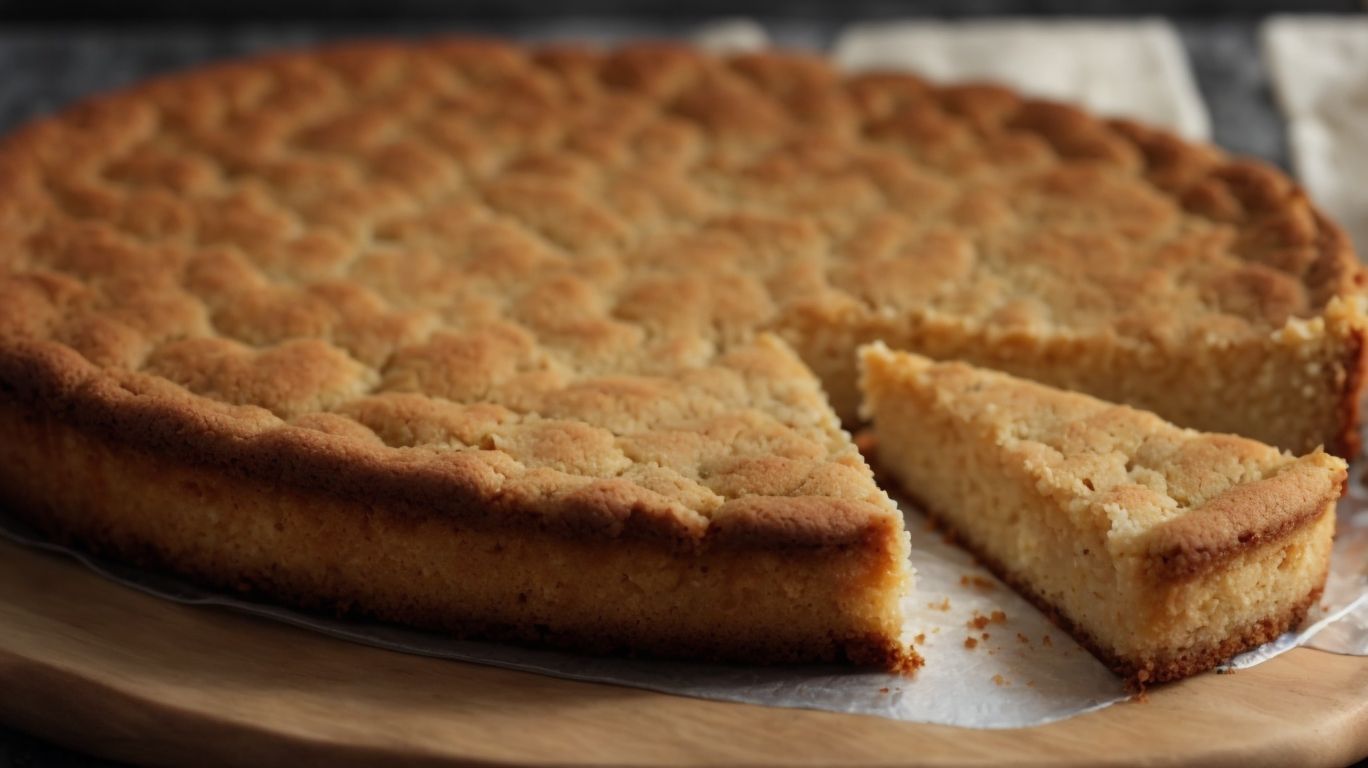How to Bake Flat Cakes Without Strips?
Are you tired of your cakes coming out uneven or with a domed top?
Discover the world of flat cakes, why it is essential to bake them evenly, and the common techniques used to achieve this.
Learn about using cake strips, reducing oven temperature, and six alternative methods to bake flat cakes without them.
Stay tuned for tips and tricks to ensure your cakes come out perfectly flat every time.
Key Takeaways:
What are Flat Cakes?
Flat cakes are cakes that have a uniform and level surface, free from doming or uneven rising.
In the world of baking, achieving a flat cake is crucial for various reasons. Level surfaces ensure even baking and consistent texture throughout the cake. It also facilitates easier assembly for layer cakes, providing stable foundations for beautiful decorations. To achieve this, bakers employ different techniques such as using cake strips, baking at lower temperatures, and properly greasing and flouring pans. Flat cakes are not only visually appealing but also enhance the overall taste and texture of the final product. With the right tools and methods, mastering the art of baking flat cakes is within reach for any aspiring baker.
Why is it Important to Bake Flat Cakes?
Baking flat cakes is crucial to ensure even layers for cake assembly, decorating, and professional presentation.
Having uniform cake layers provides a visually appealing finish to your creation, enhancing not only its aesthetic appeal but also making it structurally stable. When cakes are baked flat, they are easier to level, stack, and frost, ensuring a seamless and neat appearance. Flat cakes also make it simpler to add fillings between the layers, resulting in a more balanced distribution of flavors throughout the cake. Decorating a flat cake becomes a smoother process, as the even surface allows for consistent design elements to be applied effortlessly.
Common Techniques for Baking Flat Cakes
Achieving flat cakes can be accomplished through various techniques such as using cake strips, reducing oven temperature, and selecting an even baking pan.
One common method to ensure level cake layers is by wrapping cake strips around the baking pans.
This simple yet effective technique helps in maintaining an even temperature around the cakes, preventing domed tops and uneven rising.
Adjusting the oven temperature slightly lower than the recipe suggests can promote a more even and controlled rise, reducing the risk of a humped center.
Regarding pan selection, opting for light-colored, aluminum pans with straight edges distributes heat evenly, aiding in the creation of uniformly baked cakes.
By combining these methods, bakers can achieve professional-looking, flat cakes ideal for stacking and decorating.
Using Cake Strips
Cake strips, such as the popular Wilton baking strips, are designed to insulate the cake pans and promote even baking, resulting in flat cakes.
By wrapping these specialized strips around the outside of the cake pans before baking, you create a barrier that slows down the heating of the edges. This method prevents the outer edges from baking faster than the center, which commonly leads to doming or an uneven rise.
The gentle insulation provided by the cake strips encourages the cake to rise uniformly, resulting in a level surface that requires minimal trimming for layering or decorating. This not only saves time but also reduces waste, making your baking process more efficient and cost-effective.
Reducing Oven Temperature
Lowering the oven temperature slightly and extending the baking time can help prevent cakes from rising unevenly and ensure a flat top.
When the oven temperature is too high, the outside edges of the cake set too quickly, causing the center to continue rising and creating a dome shape. By reducing the temperature, the cake rises more evenly, resulting in a level surface. It’s crucial to use an oven thermometer to accurately monitor the internal temperature, as ovens can often be inconsistent. Placing a baking stone or baking sheet on the lower rack can help distribute heat more evenly, preventing the cake from overcooking on the edges.
Using an Even Baking Pan
Selecting a high-quality, even baking pan can contribute to the uniform baking of cakes and help in achieving flat cake layers.
These pans are typically made of materials like aluminum or aluminized steel, which conduct heat evenly throughout the pan, ensuring that your cake bakes uniformly without hot spots that can lead to uneven rising or browning.
Using a pan with straight, perpendicular sides also plays a crucial role in shaping the structure of your cake layers, allowing them to stack neatly for a stable and professional-looking final result.
How to Bake Flat Cakes Without Strips?

Credits: Poormet.Com – Sean Roberts
In the absence of cake strips, there are alternative methods to bake flat cakes, including using a wet kitchen towel, wet paper towel, aluminum foil, cake leveler, cake collar, and cake ring.
One effective technique is to wrap the cake pans with a damp kitchen towel before placing the batter in them. The moisture from the towel helps regulate the temperature of the pans, ensuring even baking and reducing the risk of domed cakes. Using a moist paper towel placed around the pans can also provide a similar effect.
Another method is to create a makeshift collar using aluminum foil around the edges of the cake pan. This helps redirect the heat towards the center of the cake, promoting a more level rise and preventing the edges from overcooking.
For those looking for a more precise solution, using a cake leveler to trim off any excess dome post-baking ensures a perfectly flat top. Similarly, a cake ring placed around the pan while baking serves as a barrier to encourage even rising, resulting in a uniformly flat cake surface.
Use a Wet Kitchen Towel
Placing a wet kitchen towel around the cake pan can help regulate the temperature and promote even baking, resulting in flat cakes.
When using this technique, it’s essential to ensure that the kitchen towel is damp but not dripping wet. Too much moisture can negatively affect the cake’s texture and consistency. By retaining moisture, the towel creates a humid environment around the cake, preventing it from drying out too quickly. This method is particularly beneficial when baking delicate cakes that are prone to drying or cracking.
The wet towel acts as a buffer against sudden temperature fluctuations in the oven, helping to maintain a stable baking environment. This can prevent the cake from rising unevenly or cracking due to rapid changes in heat. Remember to check and re-moisten the towel if necessary during the baking process to optimize its effectiveness.
Use a Wet Paper Towel
Placing a damp paper towel on top of the cake during baking can help keep the surface cool and prevent doming, resulting in a flat top.
When using this technique, simply wet a paper towel with cold water, ensuring it is damp but not dripping. Carefully place the moist paper towel on the cake pan before putting it in the oven. The moisture from the towel creates a cooling effect on the surface of the cake, which helps regulate the temperature and reduces the risk of the center rising more than the edges – a common issue known as doming.
By maintaining a flat top, the cake bakes more evenly, ensuring a consistent texture and appearance throughout. This simple yet effective method can be particularly helpful when baking cakes that are prone to doming, such as sponge cakes or delicate recipes that require precision in rising.
Use Aluminum Foil
Covering the cake pan with aluminum foil can help distribute heat evenly and prevent excessive browning, leading to flat cakes.
When using aluminum foil to line your cake pan, make sure to press it firmly against the sides and bottom to create a smooth surface for the batter. This ensures that the heat is distributed uniformly, resulting in a more consistent bake. The foil also acts as a barrier, protecting the edges of the cake from overcooking while the center cooks through. The reflective surface of the foil helps bounce heat back towards the cake, aiding in even baking and minimizing doming.
Use a Cake Leveler
A cake leveler tool can ensure that cakes are baked evenly and trimmed to create flat layers for stacking and decorating.
When using a cake leveler, one can easily adjust the wire or blade to the desired height to ensure consistent layers. This handy tool helps not only in achieving professional-looking cakes but also ensures even distribution of frosting or filling, enhancing both taste and presentation. The sharp blade effortlessly trims any domed tops, eliminating the need for guesswork or multiple cuts. With precision , cake levelers guarantee that each layer is uniform in thickness, resulting in a perfectly structured cake that is visually appealing and delightful to taste.
Use a Cake Collar
Wrapping a cake collar around the pan can help contain the cake batter, encourage even rising, and result in flat cake layers.
When the cake batter is secured within the cake collar, it is better supported during the baking process, which in turn prevents the edges from overcooking or becoming uneven. This is especially beneficial for cakes with delicate textures or intricate designs that require level layers for smooth icing application.
The use of a cake collar promotes a clean and professional presentation as it prevents the batter from overflowing, resulting in perfectly shaped cakes without any trimming necessary.
Use a Cake Ring
A cake ring placed around the cake pan can assist in shaping the cake during baking, ensuring flat and uniform layers.
Using a cake ring not only helps in achieving perfectly even layers but also promotes consistent baking results. The ring acts as a barrier, guiding the cake batter to rise evenly without spilling over the edges. This results in a professional-looking cake that is easy to assemble and decorate, ideal for creating stunning layer cakes for any occasion.
The cake ring allows for easy removal of the cake after baking, ensuring a smooth and clean release without any sticking. Its adjustable nature makes it versatile for various cake sizes, making it a must-have tool for any avid baker’s kitchen arsenal.
Tips for Baking Flat Cakes

Credits: Poormet.Com – Jeffrey Flores
To achieve flat cakes consistently, consider using an accurate oven thermometer, incorporating room temperature ingredients, avoiding overmixing, minimizing oven door openings, and allowing gradual cake cooling.
Regarding oven monitoring, it’s crucial to verify the temperature with a reliable thermometer to ensure even baking. Preheating the oven adequately and positioning the cake in the center rack can promote even heat distribution, reducing the risk of uneven rising.
For ingredient preparation, make sure to bring eggs, butter, and other dairy products to room temperature for better incorporation and a smoother batter texture. Gentle mixing techniques, such as folding in dry ingredients, help avoid gluten development, leading to a tender crumb.
During baking, refrain from opening the oven door frequently as rapid temperature fluctuations can negatively impact the cake’s structure and rise. Remember that a gradual cooling process prevents the cake from collapsing or becoming dense, allowing it to set properly.
Incorporating these tips into your baking routine can significantly improve the outcome of your cakes, ensuring consistently flat and delicious results.
Use an Accurate Oven Thermometer
Using a reliable oven thermometer ensures that the baking temperature is precise, leading to consistent results and flat cakes.
Temperature control is crucial when it comes to baking, as even slight variations can significantly impact the outcome of your cakes. An accurate oven thermometer allows you to monitor and adjust the temperature with precision, ensuring that your cakes bake evenly and without any unwanted doming or sinking in the center. By placing the thermometer in the center of your oven, you can confirm that the temperature matches what your recipes require, leading to perfectly baked treats every time.
Use Room Temperature Ingredients
Allowing ingredients such as eggs and butter to reach room temperature before baking promotes better incorporation and even baking, resulting in flatter cakes.
When ingredients are at room temperature, they react more uniformly with other components in the batter, ensuring a smoother consistency. This allows for better mixing efficiency as the ingredients blend together seamlessly, resulting in a homogenous batter. As a consequence, the cake texture becomes tender and moist, as the ingredients can form a stable emulsion effortlessly. Room temperature ingredients also contribute to a more even distribution of flavors throughout the cake, enhancing its overall taste.
Don’t Overmix the Batter
Overmixing the cake batter can lead to gluten development and air incorporation, causing uneven rising and doming in cakes.
When the batter is overmixed, the gluten in the flour gets activated more than necessary, resulting in a tighter, denser crumb structure. This can make the cake tough and chewy instead of light and fluffy. Excessive incorporation of air bubbles can lead to a fragile cake structure that collapses easily. It’s crucial to strike the right balance during mixing to ensure a tender, well-risen cake with a soft texture.
Don’t Open the Oven Door Too Often
Frequent opening of the oven door can lead to temperature fluctuations and uneven baking, resulting in cakes that may not rise uniformly.
This could be a crucial factor in achieving that perfectly flat cake you desire. Each time the oven door is opened, heat escapes, causing the internal temperature to drop. This sudden change can interfere with the baking process, leading to an inconsistent rise. To ensure a stable baking environment, it’s recommended to resist the temptation to open the oven door unnecessarily. Consistency in maintaining the oven temperature is key to achieving a flawless cake with a level surface.
Allow the Cake to Cool Gradually
Allowing the cake to cool slowly on a wire rack post-baking can prevent rapid contraction and maintain a flat cake surface.
When a cake cools gradually, it allows for a more controlled cooling process, which helps to prevent the formation of cracks on the surface. By gradually decreasing the temperature around the cake, the structural integrity of the cake is preserved, resulting in a moist and evenly textured final product.
This gentle cooling method also allows the cake to settle evenly, reducing the risk of it collapsing or becoming lopsided. The slow cooling process gives the flavors in the cake time to meld together, resulting in a more harmonious taste profile.
Frequently Asked Questions
What are cake strips and why are they used when baking?
Cake strips are fabric strips that are soaked in water and wrapped around the edges of cake pans before baking. They are used to promote even baking and prevent doming or uneven rising of cakes.
How can I bake flat cakes without using cake strips?
One way to bake flat cakes without using cake strips is to use a flower nail. Simply place a greased flower nail in the center of the cake pan before pouring in the batter. This will help distribute heat evenly and prevent doming.
Can I make my own cake strips at home?
Yes, you can make your own cake strips at home by cutting long strips of an old towel or t-shirt, soaking them in water, and wrapping them around the edges of the cake pan. Just make sure to secure them tightly with clips or pins.
Are there any other alternatives to cake strips?
Yes, there are other alternatives to cake strips such as using wet paper towels or parchment paper strips. Simply soak the paper towels or parchment paper in water, wring out any excess water, and wrap them around the edges of the cake pan.
Do I need to adjust the baking time when using cake strips or alternatives?
Yes, when using cake strips or alternatives, it is recommended to start checking the cake for doneness a few minutes earlier than the recipe calls for. This is because these methods can help the cake bake faster and more evenly.
Can I use cake strips with any type of cake?
Yes, cake strips can be used with any type of cake, including layer cakes, sheet cakes, and bundt cakes. Just make sure to adjust the length of the strips based on the size of your cake pan.

